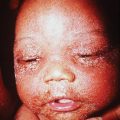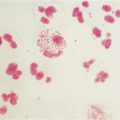CASE 22
Dawn, a 15-year-old African American girl, was debating whether she should go on the spring ski trip that she had planned for so long. She had noticed stiffness in both her hips (and hands) each morning and wondered if that would affect her skiing. However, since the stiffness abated during the day, she thought that she would go, even if it meant only skiing in the afternoons. She enjoyed the trip, particularly since the weather was so warm and sunny, but she was concerned when she noticed a rash on her face. The rash persisted after she returned and so she went to see her family physician, who recognized the rash as being a classic presentation of systemic lupus erythematosus (SLE), and so he referred her to a local rheumatologist.
On questioning, the rheumatologist learned that there was no history of arthritic-type diseases in the family, although a distant cousin had recently been diagnosed with an inflammatory bowel disorder. A urine sample was found to be normal, indicating that glomerulonephritis was not a problem. A complete blood cell count was performed, along with an assay for antinuclear antibodies (ANA). The white blood cell count indicated a mild lymphopenia and neutropenia, reduced red blood cell count, and a severe drop in platelet count (see Appendix for reference values). The ANA antibody titer was significantly high (normal range: 1:40 to 1:120 depending on the laboratory). How would you proceed?









